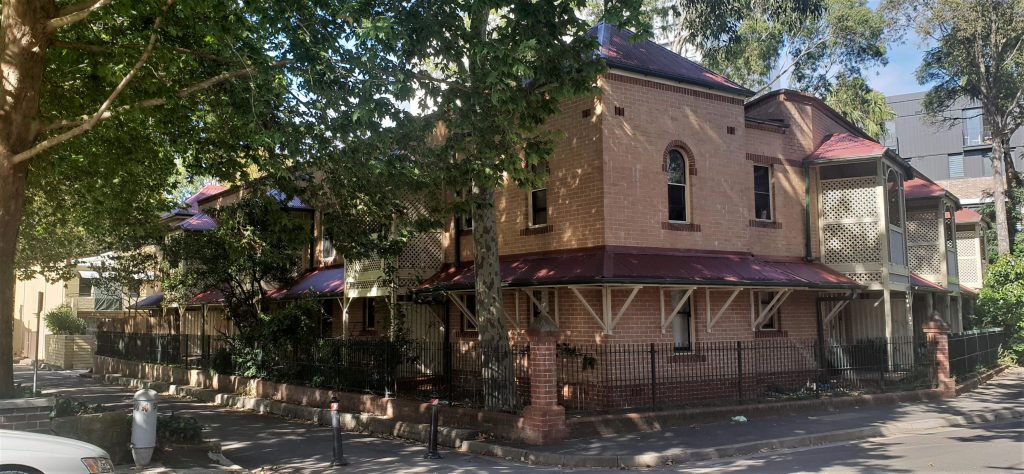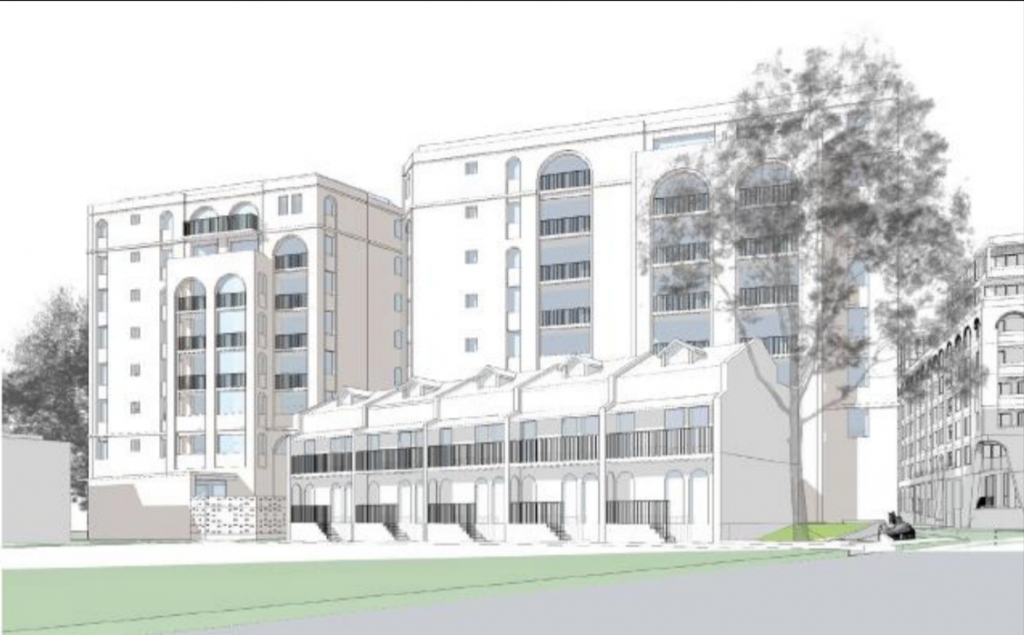Glebe Society Bulletin November 2020
The Glebe Society President, Janet Wahlquist, has written to Sydney City Lord Mayor Clover Moore expressing the Society’s strong opposition to Council’s Plans to adjust the boundaries of the the St Phillips Heritage Conservation Area to exclude 2A-2D Wentworth Park Road and 17-31 Cowper Street to enable their demolition and replacement by two eight-storey apartment buildings.
In her letter, Janet Wahlquist said that ‘the proposal flies in the face of over five decades of exemplary planning in Glebe whereby historic character was conserved, utility improved, and additional housing provided, without destroying the spirit of place. The Society recognises the urgent need for social housing, however this proposal which provides for only 15 net additional social housing bedrooms, can only be described as inept, retrograde, and corrosive’. See below for the full letter and its two attachments.


The Inner-City Housing Team and their work on infill development in Glebe: An interview with the lead architect John Gregory
Earlier this year Ian Stephenson, the Glebe Society Planning Convenor, spoke with John Gregory, the lead architect of NSW Housing Commission’s inner city housing team. In the 1980s they added over 1,000 bedrooms to Glebe with no building higher than three storeys. Unlike the current proposal to erect two eight-storey apartment towers in the St Phillips Heritage Conservation Area, their work did density well because it understood the importance of scale, form and rhythm and respect for historic subdivision patterns.
In Glebe John Gregory was in charge of the architectural team while Brian Asterio led the planning consultations that informed the scheme. The social planning was important because it helped understand the tenants’ needs and desires when it came to housing.
Low density is good social planning, there are several studies which demonstrate that five storeys is the maximum height which allows people to feel a sense of connection to the street. Social housing tenants have diverse backgrounds, and some have special needs. Low rise development which does not necessitate the use of lifts and long corridors gives tenants greater agency in determining who they mix with.
In the 1980s the British approach to designing new buildings in historic neighbourhoods was that they should not be expressive but that they should be circumspect. The Housing Commission team took a different approach which was that expression should not be supressed provided the designs used scale, form and a carefully considered architectural vocabulary to relate to the existing buildings.
Russell Jack (1925-), principal of Allen Jack and Cottier and a teacher and later Professor at UNSW, influenced the development of John Gregory’s architecture with his view that good design must have about it an element of delight. Another influence was Ted Mack, who was Assistant Chief Architect at the NSW Housing Commission in the early 1970s.
As well as understanding the tenants’ needs the other fundamental consideration in inserting new development into Glebe lay in developing a deep understanding of the subdivision. John Gregory said if the new work was to be successful, the designer had to understand the rhythm of the subdivision. The rhythm is what ties things together, [using it to inform the new work] is what will make it work.
A number of things came together in the late 1980s to create this excellent infill in Glebe.
Key points were:
- A willing client (the NSW Housing Commission)
- A skilful team of architects
- Good social planning which meant the tenants needs were understood
- A considered reading not just of the architectural vocabulary of the St Phillips Estate but how it all fitted together
- Being prepared to design buildings which were creative in their own right, which meant that the designs had a sense of joy and zest
The group worked as a team but there were lead architects for particular projects. The four terrace houses at 2A-D Wentworth Park Road were designed by a young architect, Steven Nihas. The flats at 17-31 Cowper Street were by David Tory. John Gregory’s work includes the flats at 15-23 Catherine Street and 4-16 Mt Vernon Street, Glebe.
The project added 1,000 bedrooms, in various configurations of flats and houses, to Glebe in a way which complemented the historic suburb, rather than detracting from it. The maximum height was three storeys. It also respected the neighbourliness of the Glebe by providing verandahs where residents could engage with the street from their own territory.













There are no comments yet. Please leave yours.